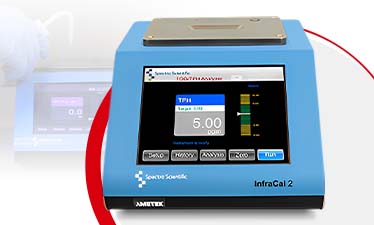Some Interesting Facts About Fingerprints We Bet You Didn’t Know
Fingerprints are known to be an essential form of evidence in any crime scene. Forensic experts investigate the crime scene in hopes of collecting fingermarks and analyze them for finding potential proof of the criminal activity or person.
Over the years, there have been many technological advancements that have resulted in developing advanced solutions for fingermark collection, analysis and evaluation. The LFT - Fingermark Developing System is a cutting edge solution that uses chemical vapour fuming process to develop fingerprints on a range of tough surfaces.
But before we learn more about this advanced fingerprint developing system, let us explore some of the interesting facts about fingerprints in general. Continue to read till the end to learn about them.
Fingerprints are an outcome of a struggle
Human skin is made from several layers and each of these layers consists of sub-layers. A developing fetus is in the stage where these layers are continuously stretching and straining that can snag on each other.
Scientists are of the belief that the fingerprints are formed when the epidermis’s bottom layer grows at a different rate in comparison to the rest of the skin. This causes it to buckle and tug on the dermis.
Therefore, the human fingerprints are formed of many skin layers all twisted together, kind of similar to a soft-serve swirl.
Some people don’t have fingerprints and are born without them
Yes! It is true. Some people are born without fingerprints. Mainly due to certain genetic conditions. There are primarily three genetic conditions that prevent fingerprint formation.
These conditions are Dermatopathia pigmentosa reticularis (DPR), Naegeli-Franceschetti-Jadassohn syndrome (NFJS) and adermatoglyphia. The conditions DPR and NFJS cause an array of symptoms that are far much worse than smooth fingerprints.
Whereas, adermatoglyphia only causes no fingerprint symptoms and makes it difficult for people diagnosed with it as they have trouble confirming their identification through fingermarks.
Fingerprints are proven to be highly durable
Did you know that even after death, our fingerprints tend to stick around? They are extremely helpful when it comes to identifying bodies. However, as much as they are durable, sometimes fingerprints can be lost with time.
It has been observed in many people especially who are involved in rough tactile jobs such as bricklaying or are exposed to chemotherapy drugs like capecitabine, these tend to erode the fingerprints.
However, they can regenerate again unless there has been any permanent damage to the tissues.
Fingerprint collection method skyrocketed during World War II
Wartime vigilance meant that the FBI were collecting bulk fingerprints that were more than ever before. From soldiers, military suppliers and foreign agents to potential spies and draft dodgers, fingerprint collection was mandatory to all.
By the year 1943, the fingerprint collection data reached more than 70 million prints. In order to manage and prevent an explosion of information, the agency transported to a bigger warehouse where women were hired and trained for sorting through fingerprints at least 10 hours a day and six days a week.
If you are in need of an advanced fingerprint developing solution then make sure to check out the LFT - Fingermark Developing System now.








